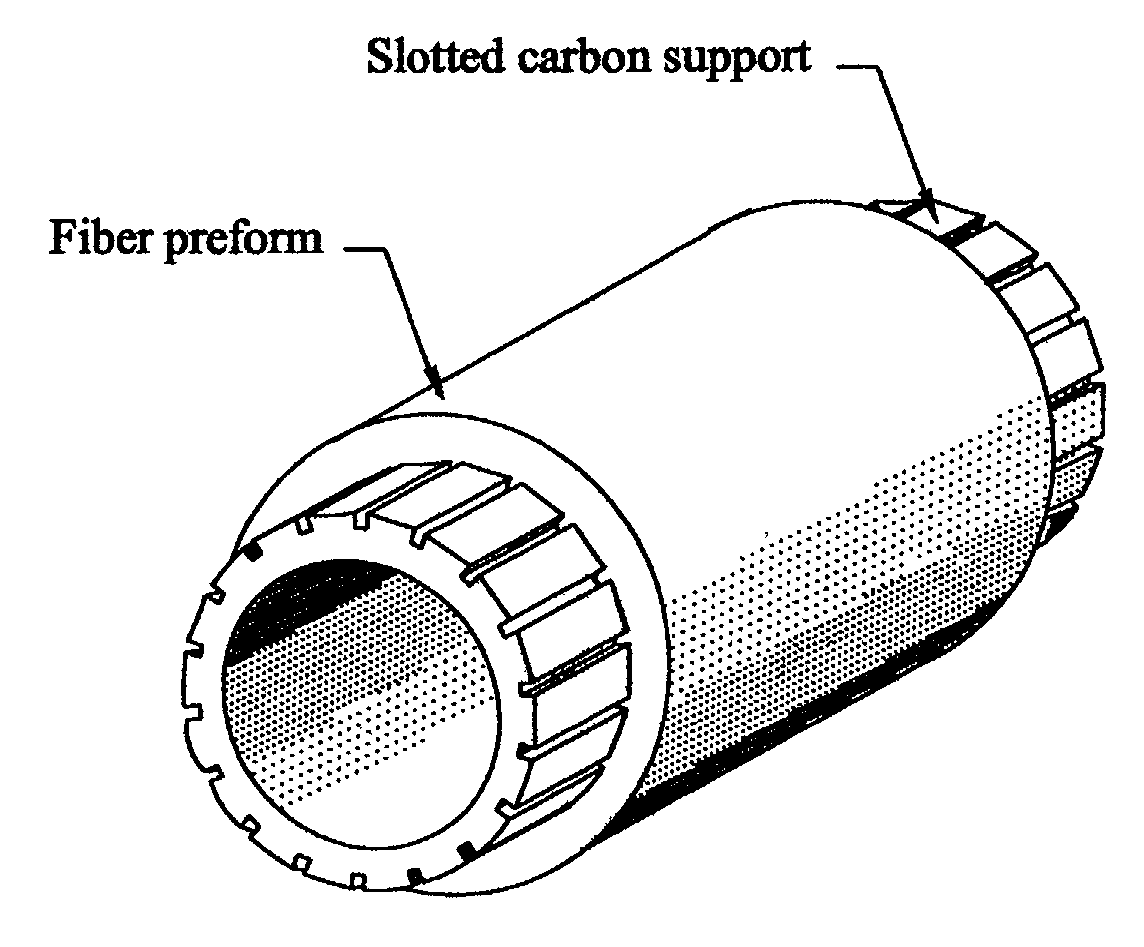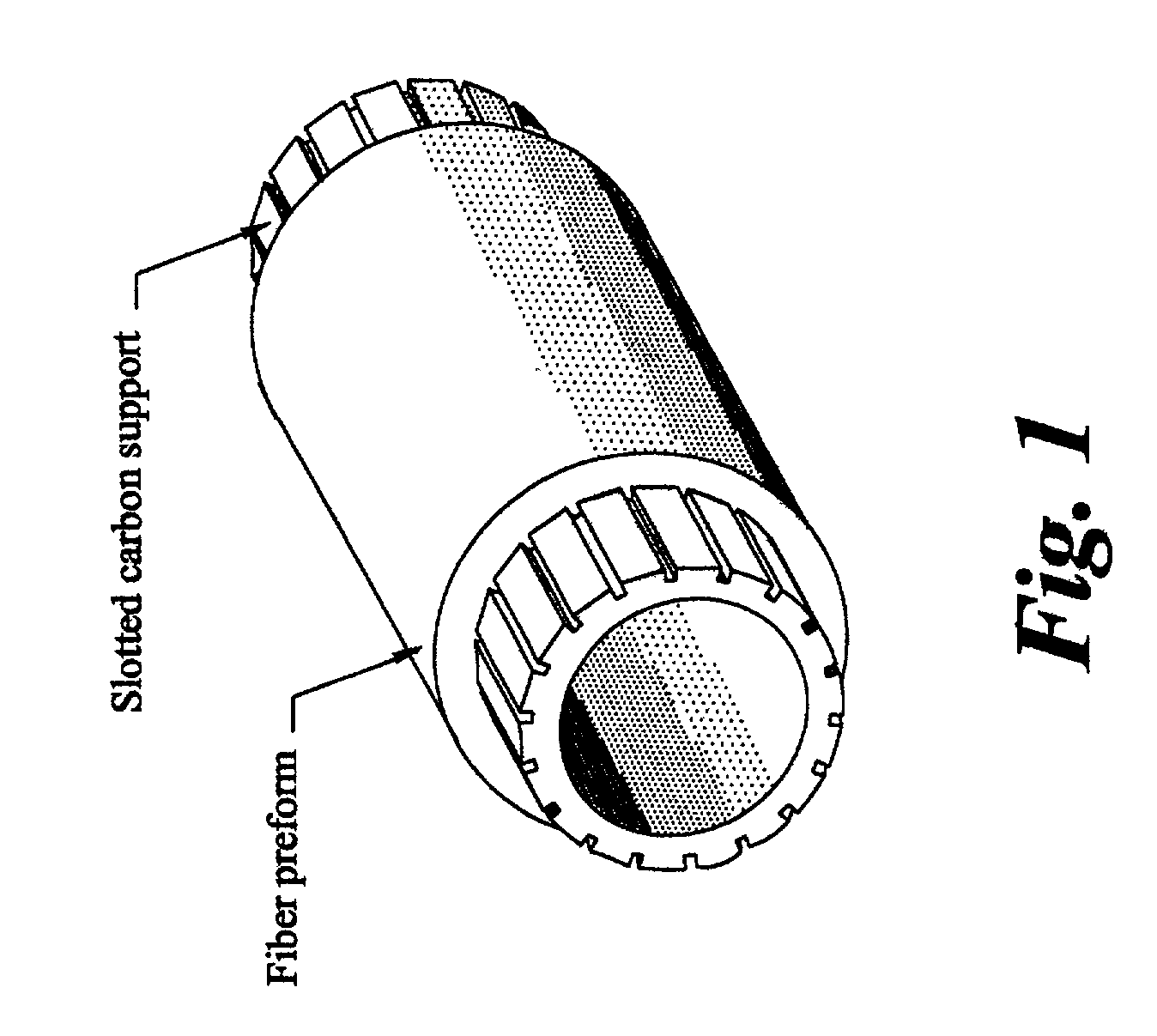Method for producing melt-infiltrated ceramic composites using formed supports
a technology of ceramic composites and formed supports, which is applied in the field of ceramic composite production, can solve the problems of inferior products, non-uniform infiltration, and increase the fabrication cost, and achieve the effects of preventing reaction, preventing significant reaction, and superior debonding characteristic of fibers
- Summary
- Abstract
- Description
- Claims
- Application Information
AI Technical Summary
Benefits of technology
Problems solved by technology
Method used
Image
Examples
example 2
[0038] Several shroud rings of composite material of SiC fibers in SiC matrix having an ID of 46.61 cm were fabricated using the procedure of Example 1 and a slotted carbon mandrel. Shroud rings require a very tight tolerance on the ID dimension and the circularity. By fabricating the shroud rings on the carbon mandrel, the required tolerance of 0.5 mm was achieved, as measured by a coordinate measuring machine. In contrast, smaller shrouds made without a supporting mandrel showed out-of-roundness values of up to about 6 mm. These results indicated that dimensional tolerance was consistently achieved with the present invention.
PUM
| Property | Measurement | Unit |
|---|---|---|
| width | aaaaa | aaaaa |
| width | aaaaa | aaaaa |
| temperature | aaaaa | aaaaa |
Abstract
Description
Claims
Application Information
 Login to View More
Login to View More - R&D
- Intellectual Property
- Life Sciences
- Materials
- Tech Scout
- Unparalleled Data Quality
- Higher Quality Content
- 60% Fewer Hallucinations
Browse by: Latest US Patents, China's latest patents, Technical Efficacy Thesaurus, Application Domain, Technology Topic, Popular Technical Reports.
© 2025 PatSnap. All rights reserved.Legal|Privacy policy|Modern Slavery Act Transparency Statement|Sitemap|About US| Contact US: help@patsnap.com



